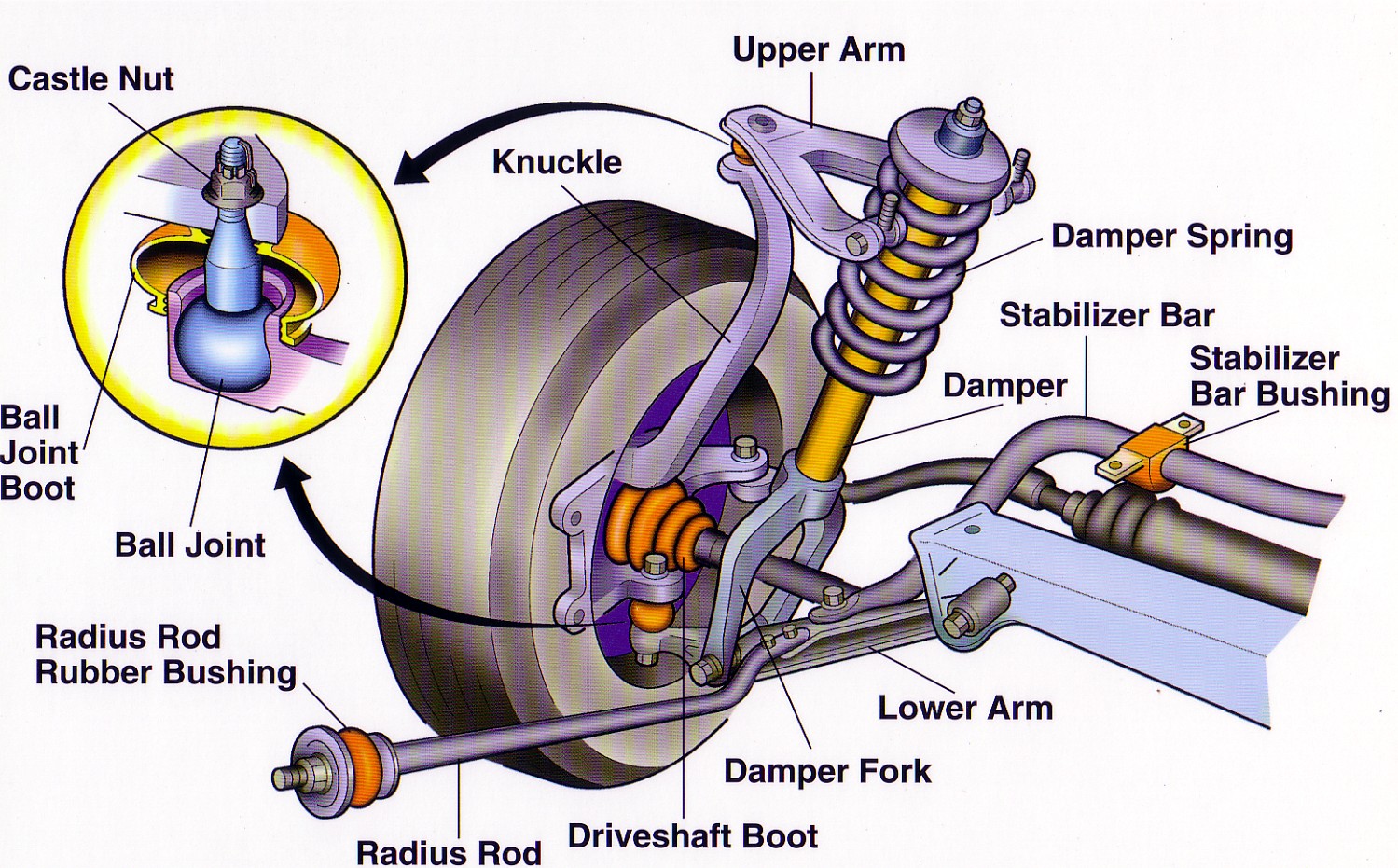
Suspension System MechanicsTips
How a Typical Front End Suspension Works (Plus Diagram) - In The Garage with CarParts.com Understand how a typical front end suspension works and what to do in case you need a front end repair in this helpful article. Read more.

BEST REFERENCE FOR ENGINEERING STUDENTS Chassis,Frame and Body
How Car Suspensions Work | Car Suspension System ExplainedWith car suspension animation in the video, the contents include1) Car suspension components: stee.
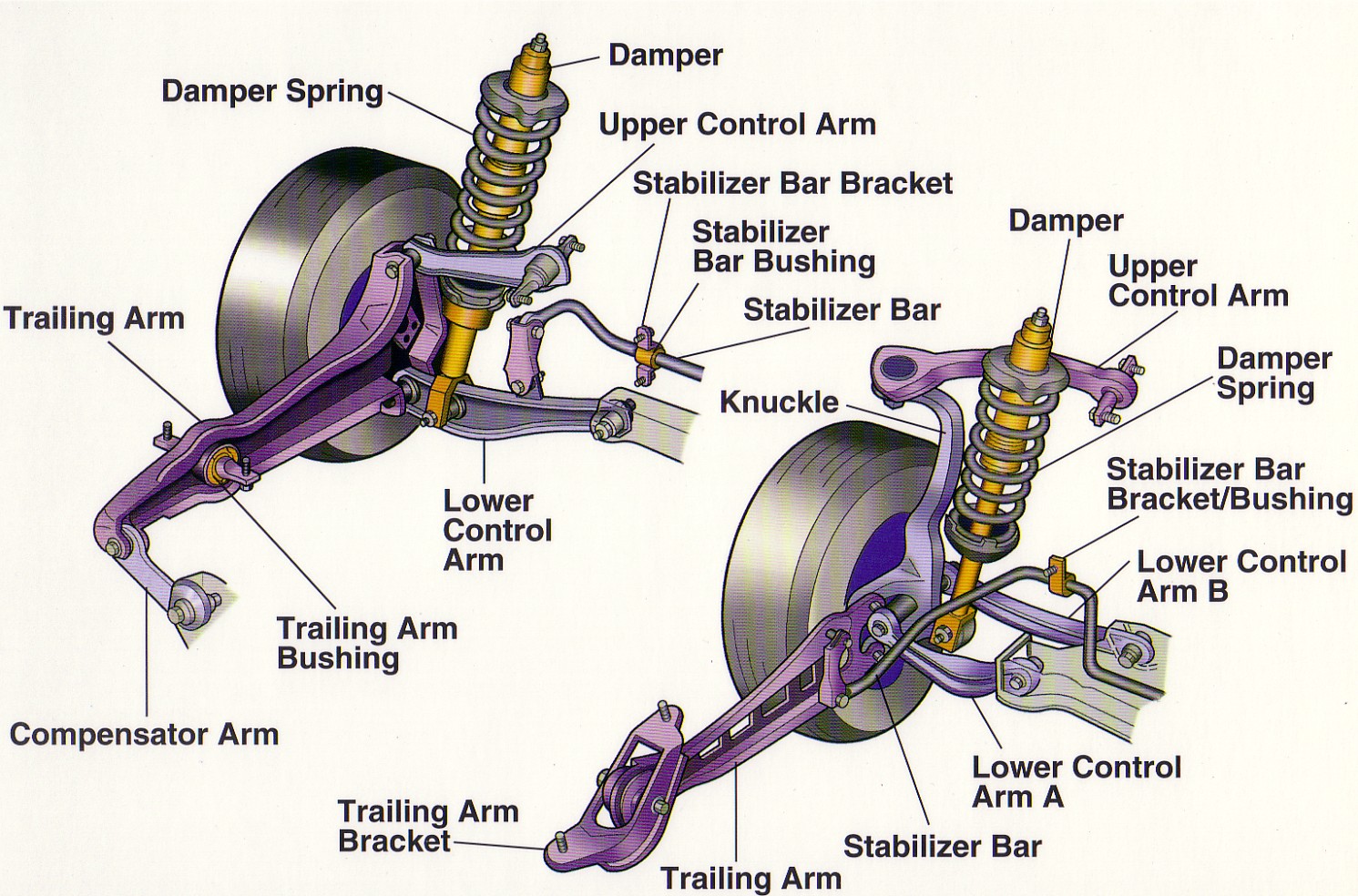
Automobiles world Suspension System
The suspension system of a motor vehicle is divided into the rear end suspension and front end suspension. Types of Suspension System Following are the types of the suspension system used in vehicles: Front End Suspension System Rigid axle front suspension. Independent front suspension Twin I-Beam Suspension System
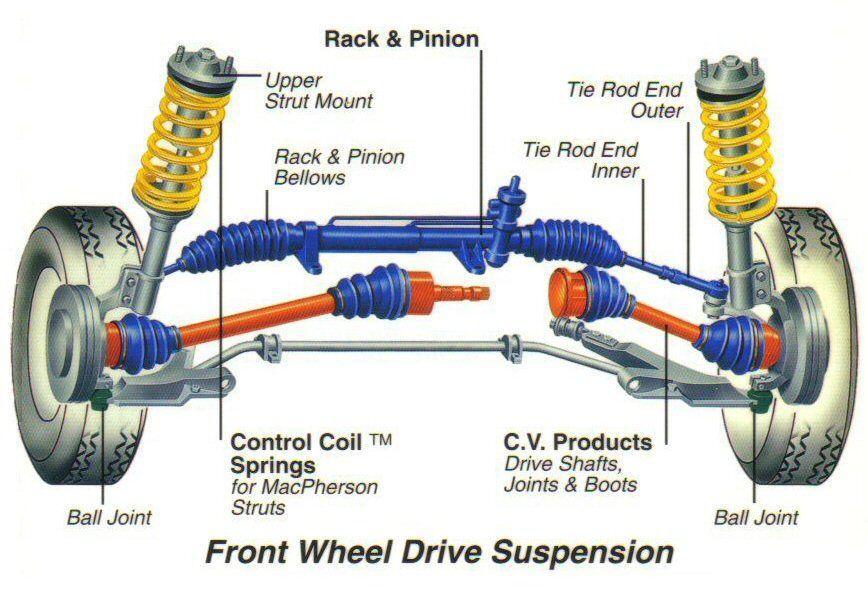
Vehicle Suspension Accurate Alignment & Brake
Car Suspension Basic Anatomy Lesson You may not even notice your car suspension and everything it does for you. Because there are many dynamic forces at play and the road is certainly never smooth, your suspension system has to work hard to keep your wheels firmly planted on the pavement and help you maintain control of your vehicle.

Automobile Suspension (Car Suspension) Explained
A rear-wheel-drive car often has a live axle, a tube containing both the drive shafts (half shafts) and the differential gears . A four-wheel-drive car may have a live front axle as well. A dead axle - a rigid beam - is now used at the front on vans and trucks only. Some front-wheel-drive cars have a dead rear axle. A rigid axle will have springs and links to prevent sideways movement.

Suspension Diagram Car Anatomy in Diagram
**Short answer car suspension diagram:** A typical car suspension consists of springs, shock absorbers or dampers, and various linkages to connect the wheels to the chassis. A diagram shows that the main components are arranged in a "double-wishbone" or "McPherson strut" configuration, depending on the type of system used.

A Closer Look at the Car Suspension System Toyota of North Charlotte
Diagram KU1. Side and top views of a non-driven upright/knuckle within an independent wishbone suspension. Diagram KU2 shows an example of an independent wishbone suspension for a driven wheel. As with the non-driven version, the upright (Yellow) is attached to the vehicle using the upper and lower wishbones which have ball joints or rod-ends.
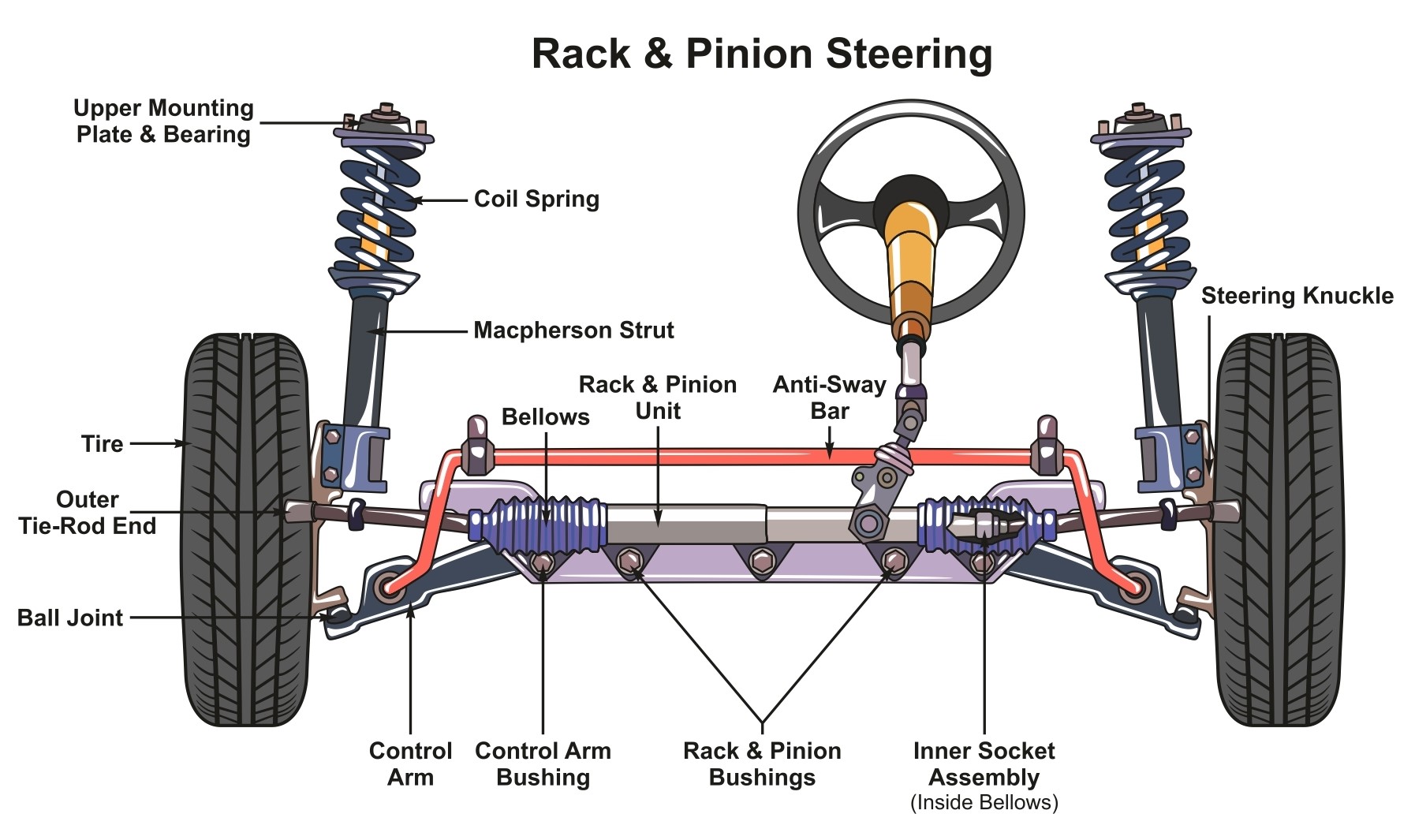
pinte Identifiant St car suspension parts diagram Ligne de mire moins
Driveline From grinding sounds and steering wheel pull to full-car leans, the shocks and suspension of your car can cause a number of issues - and MOOG® is here to help.
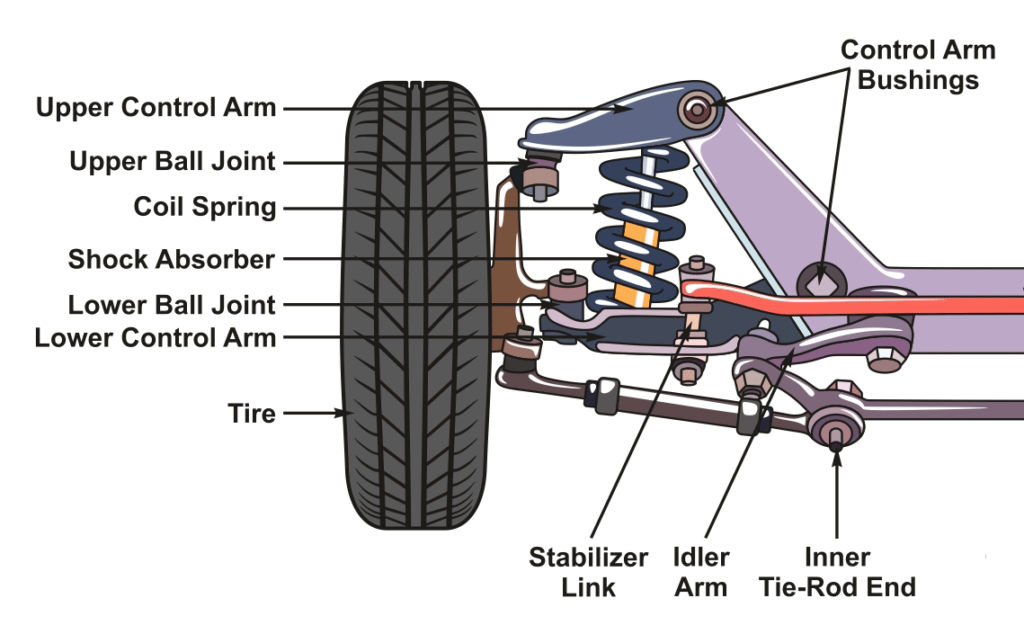
Car Front Suspension Diagram Images and Photos finder
Suspension System Components 1) Springs 2) Wheels/Tires 3) Shock Absorbers 4) Rods/Linkages 5) Joints/Bearings/Bushings 6) Steering System 7) Frame Suspension System Components 1) Springs Coil springs are the components of a suspension system which absorb the impact when you drive over bumps or holes in the road.
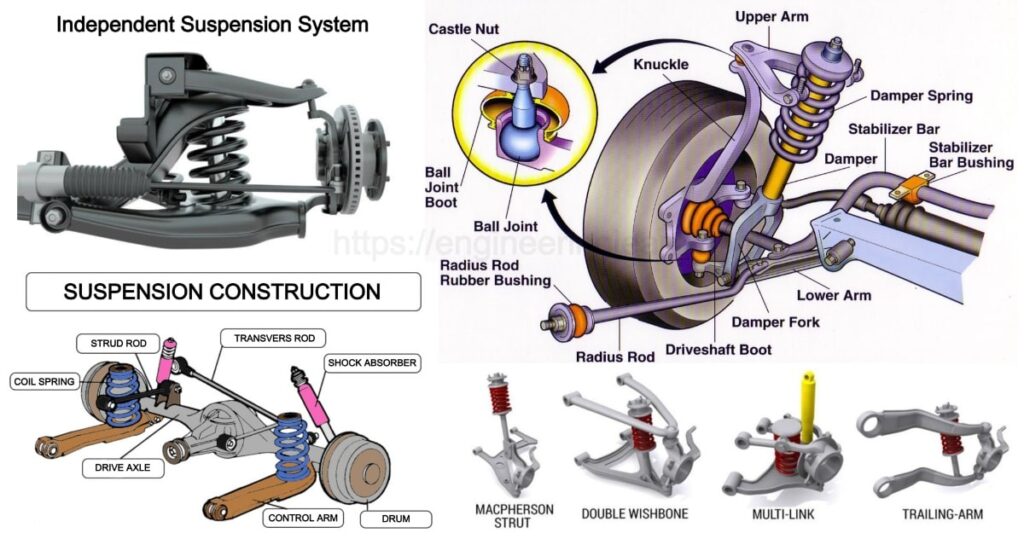
Suspension System Types & Components Guide] Engineering Learn
Simple Guide to Automotive Suspension. Push down hard on your car's front wing. The car may sink a little before rising again but without bouncing. That's the suspension working. Designing an effective suspension system is as much an art as it is a science. Lots of compromises must be made between ride quality and handling performance, the.
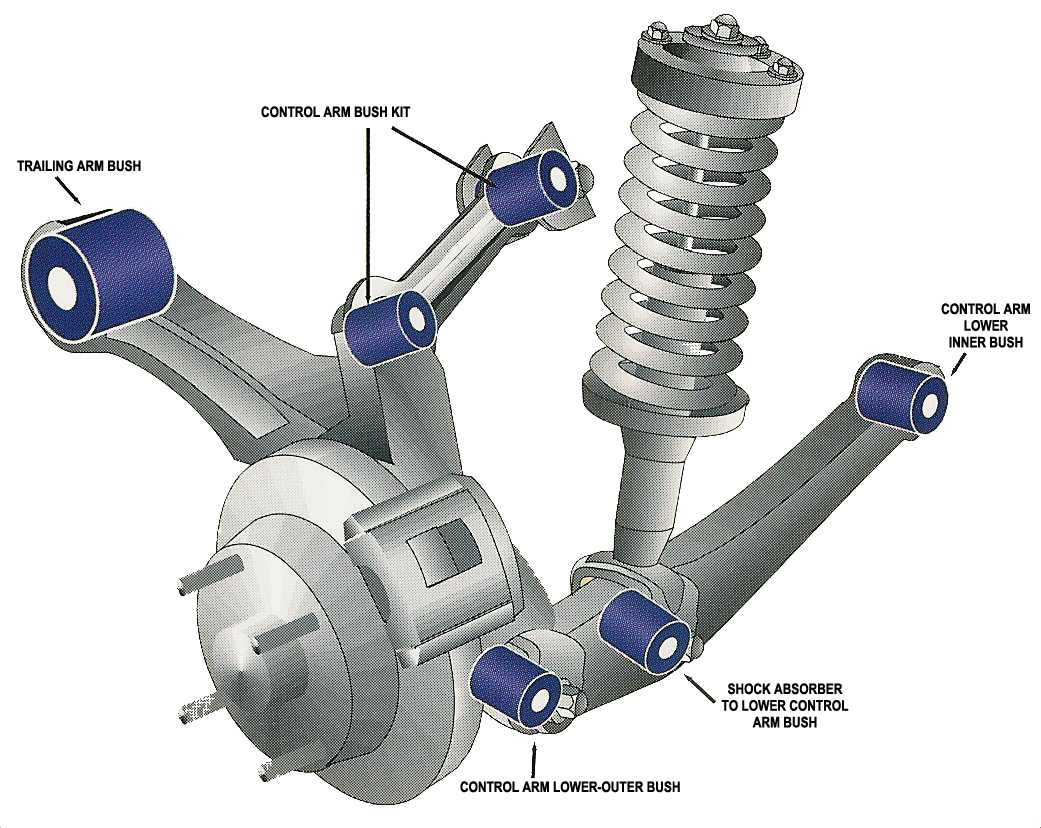
Different Front Car Suspension Diagram
Suspension is the system of tires, tire air, springs, shock absorbers and linkages that connects a vehicle to its wheels and allows relative motion between the two. [1] Suspension systems must support both road holding/ handling and ride quality, [2] which are at odds with each other.
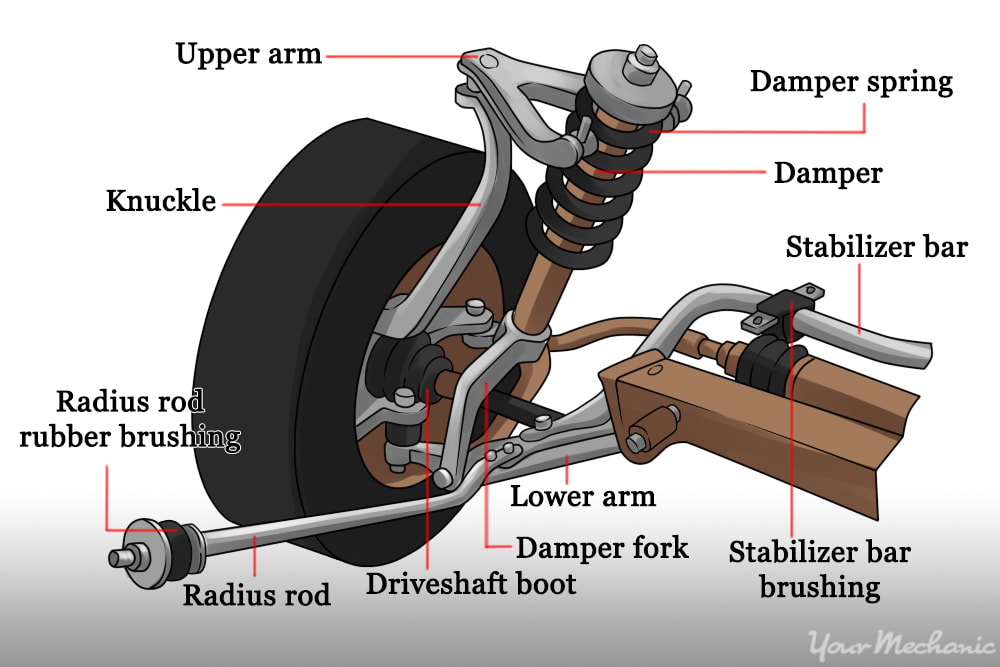
How to Replace Suspension Springs YourMechanic Advice
Car Suspension Basics, How-To & Design Tips. The suspension on a vehicle serves multiple purposes:. Diagram B6 below shows a drum brake in a hydraulic system. The driver presses the brake pedal, which forces a piston in the master cylinder to compress the brake fluid (Yellow). The fluid runs inside a brake line to slave cylinder (Blue) which.
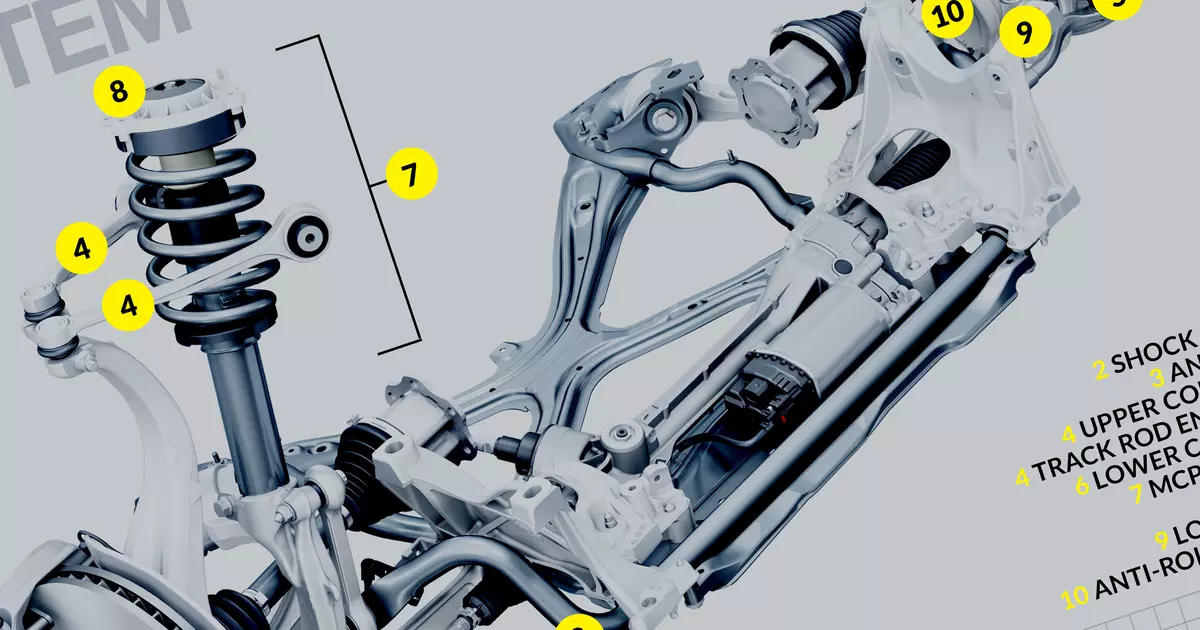
Simple Guide to Automotive Suspension Haynes Manuals
Understanding the Anatomy of Car Suspension Components: A Detailed Diagram The suspension system of a car is an essential part of its overall construction, as it ensures a smooth and comfortable ride for the driver and passengers.

front car suspension diagram
The job of a car suspension is to maximize the friction between the tires and the road surface, to provide steering stability with good handling and to ensure the comfort of the passengers. In this article, we'll explore how car suspensions work, how they've evolved over the years and where the design of suspensions is headed in the future.

suspension diagram
It can be measured as positive or negative. In the case of positive camber, the top of the wheel would pull out from the top of the car. In the case of negative camber, the top would tuck into the car. Take a look at the diagram lower down for a visual explanation. The amount of camber can drastically change the way a car drives.

1998 Toyota camry rear suspension diagram
To simplify the car suspension diagram, we will model 2 masses and 2 sets of springs and dampers Fig. 1a and analyze ¼ of an entire car. Fig. 1a and 1b. Model of active suspension system. . Car Mass 2500 kg Body Mass (m1) 650 kg Wheel and suspension mass (m2) 150 kg.